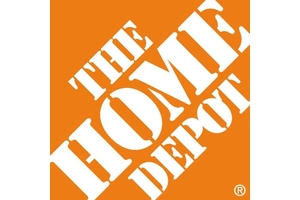Home Depot recorded a strong third quarter, with sales growing 23.2% on a year-over-year (YOY) basis to $33.5 billion, marking the second consecutive quarter sales increased over 23% YOY. Buoyed by continued strong demand for home improvement projects, the retailer reported sales growth of more than $15 billion year-to-date through the first nine months of 2020 compared to 2019.
The coronavirus (COVID-19) pandemic required Home Depot to make several investments to adjust the business’s ability to respond to the changing market environment. The company has leaned more heavily into its digital platforms since the onset of COVID-19 as a means to reach customers and drive sales. In the third quarter, the retailer reported digital sales increased 80% on a YOY basis and more than 60% of online orders were fulfilled through a store. President and COO Ted Decker said the company’s mobile app saw a significant increase in downloads, active users, and pro users. On the company’s third quarter earnings call, Decker said the company’s pro-focused, B2B website “is seeing record volumes and engagement with our pro customer.”
Chairman, CEO, and president Craig Menear said several components of the One Home Depot strategy, such as opening supply chain facilities, continued technological investments, and enhancements to the digital experience for customers, remained on track during the third quarter.
“We have now restarted many of the store investments that were paused at the onset of the pandemic,” Menear said. “Our results through the first nine months of the year clearly indicate that for many customers the home has never been more important.”
The average ticket size at Home Depot increased 10% during the third quarter and the retailer recorded strong comp growth in several product categories, including lumber. Big ticket comp transactions—transactions over $1,000—increased 23% during the third quarter, aided by strong growth in big-ticket product categories like appliances, vinyl plank flooring, and lumber. The company saw double-digit growth with both DIY and pro customers. In keeping with trends since the beginning of the pandemic, DIY sales grew faster than pro sales, though Decker said the Home Depot pro business “posted the strongest growth we’ve seen all year.” Home Depot defines pros as remodelers and builders as well as maintenance, repair, and operating supply workers.
“As we look at our different pro cohorts, growth with our smaller pro customers has been consistent with strong double-digit growth every month of the year,” Decker said. “ Growth with our larger pro customers is healthy and accelerated from the second quarter. However, some large pros still faced headwinds related to the current operating environment, including some customers being hesitant to invite pros into their homes.”
Home Depot saw an improvement in in-stock positions and a reduction in product lead times during the third quarter. In previous quarters, the retailer took steps to reduce the number of SKUs in certain product categories to focus on high-demand products and mechanized its rapid deployment network, according to Decker. Decker said the in-stock level has not quite returned to pre-pandemic levels but the company has been able to re-establish “premium” delivery windows and express car and van delivery service covering over 70% of the population.
Menear also discussed the retailer’s recent acquisition of HD Supply on the earnings call with investors. HD Supply primarily serves maintenance, repair, and operations professionals, a pro category that is “important” for Home Depot, according to Menear.
“We are committed to better serving the MRO customers and growing in this space,” Menear said on the call. “The success we’ve had with our existing MRO business makes us confident in our ability to accelerate sales growth in the highly fragmented $55 billion MRO marketplace.”




